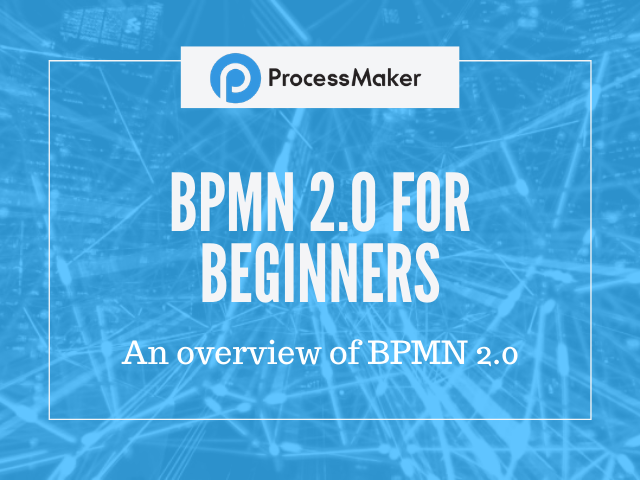3 Reasons to Use BPMN as a Standard in Automation
Blog: ProcessMaker Blog
Automation is now a mainstay in how organizations operate. In fact, 90% of businesses are using this technology to perform their business processes. To design these effective process flows in a way that everyone can understand, successful teams use a tool called business process model and notation (BPMN).
BPMN uses a set of graphical elements like symbols and diagrams to describe the logic behind a process that churns through your organization. Using it can benefit your automation strategy in three key ways:
- All stakeholders can understand how a process works
- IT and business analysts can work together on a consistent, accurate process design
- Everyone can understand how a technical process lives within the bigger business picture
How can each of these benefits jumpstart your automation initiatives?
BPMN helps all stakeholders understand how a process works
Try to present lengthy technical documentation to non-technical stakeholders, and you’re likely to be met with eyes glazed over. Enter BPMN: an accessible language used to bridge the gap between technical implementation and every mind that needs to understand how it works.
When using freehand, non-standard diagrams, organizations tend to adopt their own internal process mapping language. This “inside baseball” technique makes it challenging to collaborate effectively with outside experts, clients, or contractors. When everyone is speaking BPMN, there’s less of a likelihood for adverse gaps and misunderstandings.
BPMN improves consistency and accuracy in your processes
In many automations, information is passed between different systems or APIs, kicking off sidecar processes that are an offshoot of the main workflow. If you’re using a standard flowchart, here’s where things get a bit complicated.
BPMN solves this problem. Its full dictionary of symbols helps clear up any ambiguity in the sequence of events in a process. A level up from a standard flowchart, BPMN best showcases the properties used in process automation. Instead of simply illustrating that two actions are somehow linked, BPMN pinpoints exactly how so—what technologies link the two, how information is exchanged, and what systems need to interact. BPMN improves the standard flowchart by showing exactly how a process is meant to execute.
BPMN shows how a technical process lives in the bigger picture
A common point of failure is when technical processes exist separately from a comprehensive understanding of the business process it supports. The two should go hand in hand. BPMM helps bring these two important puzzle pieces together.
Using BPMN, you can also build a bridge between departments. When projects exist in a silo, team members have little understanding of how their contributions affect the bigger picture. BPMN helps illustrate how every step, no matter how small, supports the larger business initiative. By helping people derive more meaning from their work, you can foster a more committed and invested team.
Although BPMN specification is a 500+ page document clocking in at half the size of War and Peace, you don’t need to commit it entirely to memory. Many process modeling tools come with the complete repertoire of BPMN symbols, so you can easily drag and drop them into a process map. If you’re looking for ways to get out from under the challenges of standard whiteboard flowcharting, BPMN is the first place to start.
The post 3 Reasons to Use BPMN as a Standard in Automation appeared first on ProcessMaker.
Leave a Comment
You must be logged in to post a comment.








